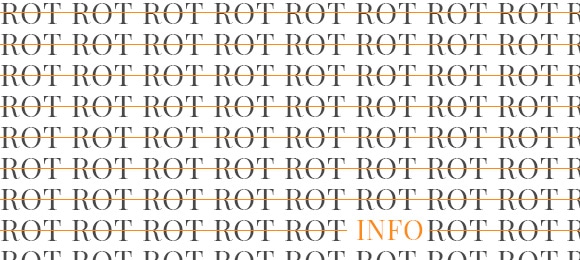Clean Up Your Web Content by Eliminating Website ROT, Part 2
In our last journal post, we discussed ROT—redundant, out of date and trivial content—and how to start eliminating it. Now we’ll discuss two different options to completely eliminate ROT: starting from scratch and working through it.
Eliminating ROT Option 1: Start from Scratch
If you want to redo your website anyway, starting your content from scratch isn’t much extra work and it eliminates issues from your old content like differing markup that could making designing your new site difficult.
Before writing any content, identify your users’ top tasks, or the tasks that matter most to your users. Then migrate and rewrite content that addresses those tasks. Next produce content to address any gaps from the rewritten content or to address tasks that aren’t already covered.
Starting from scratch is generally easier than working through your content, but it doesn’t really address the issues that create ROT.

Eliminating ROT Option 2: Work Through It
Working through your content to eliminate ROT is more time-consuming than starting from scratch, but your organization will benefit by gaining a better understanding of what ROT is for your website and how to avoid it.
Remove redundant content
Start with the ROT that is easiest to find: redundant content. Redundant content includes products or services that don’t exist anymore, employees that have left, the same content in multiple places, and so on. You can often find redundant content in search results, analytics and navigation.
Next you can deal with out-of-date content.
Deal with out-of-date content
Out-of-date content can include an event hidden in the events calendar, a phone number that doesn’t work, a mention of a specific staff member, or a reference to a product or service no longer offered. It is mainly found in pages or subsections of a website.
Because there is often so much out-of-date content, one person or small group can’t find it all. Therefore, you should have computers do as much work as possible and then split the rest of the work into small pieces and spread them among a large group of people.
You can archive content like news and events after a certain amount of time, like six months or a year. Archiving content removes it from navigation and site search, but people can still access it if they want.
You should also create a policy to have content producers review their own content periodically. They might need to log in to your content management system (CMS) once every six months to make sure their content is up to date and accurate. You could also use the last modified date in your CMS to prompt and email that reminds the content producer to check their page.
If you don’t have consequences for not reviewing content, people won’t bother doing it. Consequences could include removing the content from the main navigation and search results and adding a banner warning users that the content might be out of date.
Take out trivial content
Finding and removing trivial content is difficult because it can be hard to decide what is trivial and what isn’t. You need to set criteria to determine how valuable content is. Paul Boag recommends using the following:
- Analytics
- Users’ top tasks
- Business objectives
First check the amount of traffic a page gets. If it falls below a certain amount, mark it for review. Traffic isn’t the only indicator that content is important, but it is a good indicator that content might be trivial.
Refer back to your users’ top tasks. (See Clean Up Your Web Content by Eliminating Website ROT, Part 1.) If the content doesn’t address one of those tasks, mark it for review. Content that doesn’t help your users’ is probably trivial, but it may not be.
If the content doesn’t support your users’ top tasks, compare it to your business objectives. A task may not be important to most of your users but can still be important in supporting your main business objectives (not just minor ones). For example, even if only a small number of users go to your site to buy, it is still an important action.
If the content is valuable—supports main business objectives, addresses users’ top tasks, or has plenty of traffic—keep it. If it is not valuable, it is trivial. However, not all trivial content should be deleted. Some content, like exSite’s registered number (at the bottom of this page), needs to be on your site for regulatory reasons, or it might be important to a small but valid group of users.
Make sure that the trivial content you need to keep doesn’t interfere with finding more important content on your site. You could make the content only accessible by searching for it, or you could take it off your main site entirely, in which case you should use email, social media or some other form of communication to direct people to what they need.
Working through the ROT on your site might be more difficult than starting from scratch, but the extra effort will be worth it when the ROT is finally gone and everyone knows how to avoid creating more.
Source: Smashing Magazine